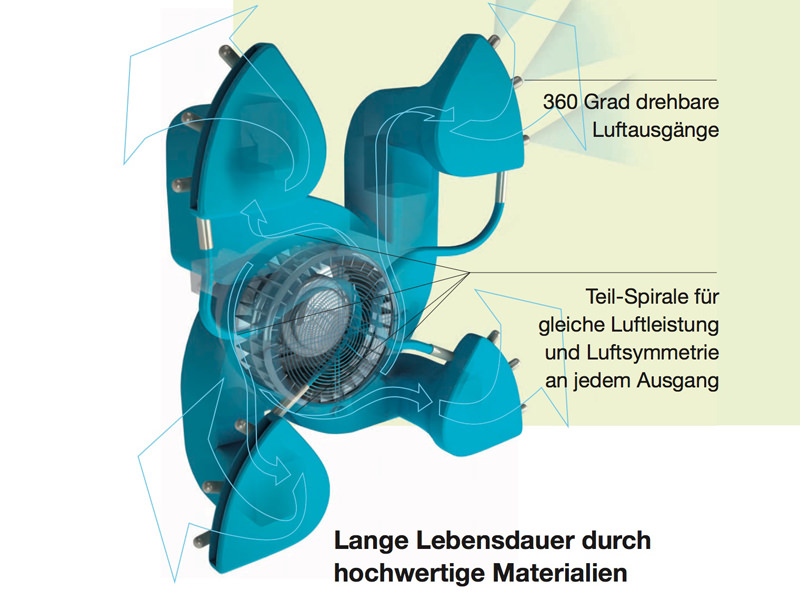Products
A revolution
Perfected over decades!
Radial blowers – our revolutionary pesticide sprayers for all areas of agriculture: from wine-growing to fruit farming to hops production, tree and wine nurseries, to special crops.

The revolution
Over the years, VICAR has perfected the radial blower so it can now be used in almost all areas of agriculture: from wine-growing to fruit cultivation and hop farming, to wine and tree nurseries, to special crops. With five basic models and 15 different turbine attachments, the pesticide sprayers are suitable for a wide range of uses – from one-metre vegetable beds to 45-metre avenue trees. When the threat of infection is high, it is especially important to ensure that the pesticide fully penetrates the canopy and foliage so that it isn’t just the top of the leaves, but the bottom of the leaves and the fruit are fully and evenly covered.
VICAR radial blowers are equal to this task thanks to the high air speed that they achieve with a lower volume of air compared to other types of pesticide sprayers. The lower airflow makes it possible to direct the air as required. This in turn leads to a more precise, less-resource-intensive application. It is important to note that the liquid is transported via the flow of air. The nozzle and pressure are solely used to determine the amount of pesticide and the drop size (large/small). Thanks to the high-quality materials, the product is designed to last. The centre of the turbine is made from stainless steel and has a cast aluminium casing.
How the patented system works
Each of the turbine‘s air outlets is supplied with air via a coil from a specific part of the turbine wheel. If the outlets are closed on one side via the hydraulically adjustable air-flow valves – for example in a water protection area or on the edge of a forest – the air intake is automatically adjusted to the required volume, in this case by half. This guarantees consistent air flow and symmetry across all outlets. In order to avoid frictional losses between the turbine wheel and the air outlets, the curved ducts are equipped with special directional fins that stabilise the air flow.
The individual air flows can be combined to achieve a more precise application – for example when spraying young shoots, for botrytis treatment, in nurseries, for soil treatment in vineyards, etc. – or to achieve a longer range. Using the example of viniculture, this means that when the wind conditions are good, the radial blower can be used for precise, horizontal coverage of the third row, without any significant spray drift. The same model can also be used with a single-sided air output to achieve twice the range in fruit cultivation. As such, you can use a single blower in the vineyards, in orchards and for vegetable production. This provides a significant cost saving, as there is no need to buy several different pesticide sprayers.
Case study: Greater penetration with higher air speeds
The higher air speeds achieved by VICAR radial blowers mean that, when working down alternate rows in a vineyard, it is possible to achieve greater penetration of the vines, particularly in the first row, as well as an improved deposition of the pesticide in the second row. A thorough coating of all plant material requires the under sides of the leaves and the entire vine structures to be coated as well as the upper side of the leaves. Depending on the width of the air flow and the resulting speed losses over distance, the average coating rate lies at around 40% for the first row and up to 60% for the second row. This means that if you work backwards and then forwards down alternate rows, you can achieve a nearly 100% application rate on each side of each grapevine. This not only saves money thanks to not needing to purchase multi-row pesticide applicators; it also saves time and fuel, resulting in lower labour and operating costs.


